How a Quiet Aussie Brand Grew Into an International Cult Favorite
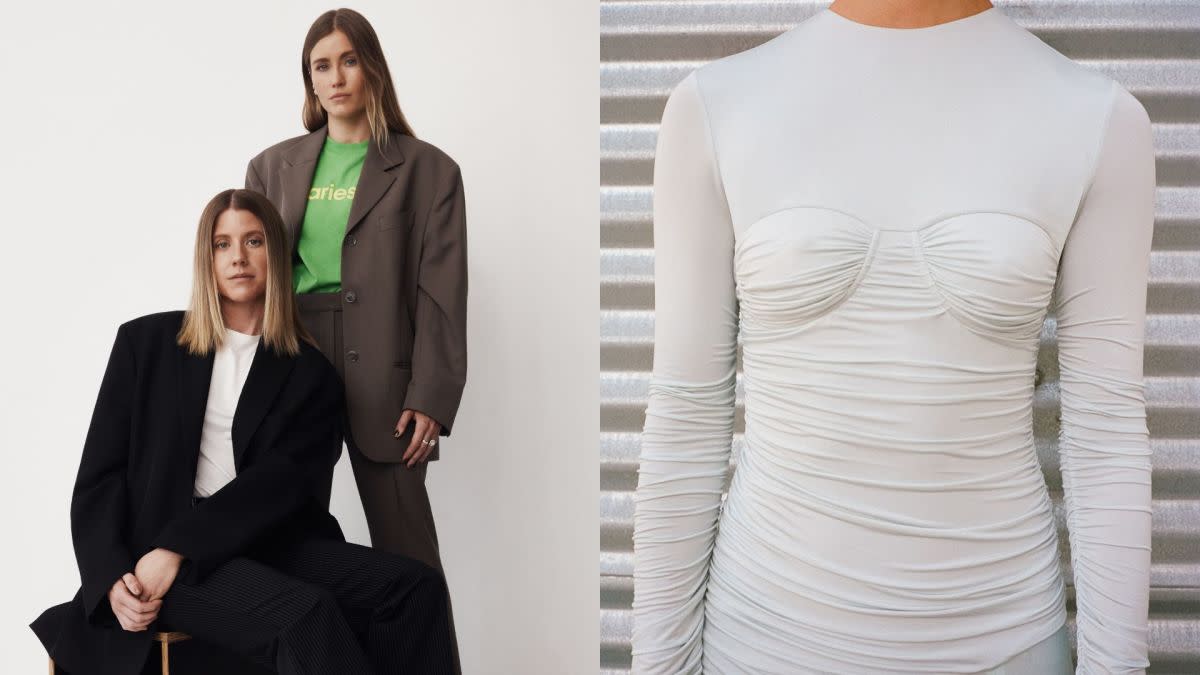
Photos: Courtesy of Sir
- Oops!Something went wrong.Please try again later.
In our long-running series "How I'm Making It," we talk to people making a living in the fashion and beauty industries about how they broke in and found success.
With their brand Sir, Nikki Campbell and Sophie Coote aren't in the business of gatekeeping Australian style. Sure, many elements of the brand's minimalist design are rooted in the Aussie lifestyle (and its head office is headquartered in Sydney), but since the very beginning, its outlook — and ambition — have been global.
"Australian fashion is unique to a lot of the rest of the world, and I think that's often why our brands do well overseas as well," Campbell tells Fashionista. "There's very much this contemporary market that exists here that maybe doesn't as much internationally. Australia has such a laid-back mix between urban and coastal lifestyle, and the fashion represents that."
The duo started the brand in 2014 while living in Bali, hoping to address a gap they saw in the market and felt in their own closets. The timing worked in their favor, as Aussie fashion exports were starting to gain momentum globally: Sir was well-positioned for success, and has grown beyond its original digital-only concept to a more robust business through a variety of channels, including wholesale, brick-and-mortar pop-ups abroad and a flagship store in Sydney's Bondi Beach.
Ahead, Campbell and Coote talk about starting the label (and the story behind the name), how their approach to retail has evolved over time, the challenges in building a global Aussie brand and more.
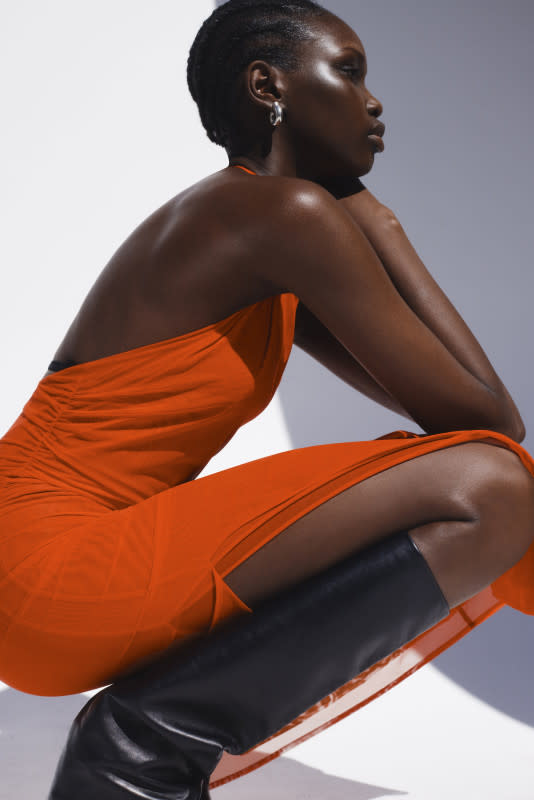
Photo: Courtesy of Sir
What was the starting point for your brand?
Coote: Nikki and I were actually 24 years old. Both of us had completed some studies and had worked in different areas prior, and we'd both seen a gap in the market at that point in time — particularly in Australia — for those minimal wardrobe essentials and fabrics like linens.
Campbell: It was not really translating into ready-to-wear as much. We definitely saw a gap in that market and we really saw a gap in our own wardrobes.
Coote: And bridging that gap with resort wear that can be worn in an urban sort of setting as well. That wasn't being done as much here. There was also very much that juxtaposition between masculinity and femininity, hence the name Sir.
Did either of you have any formal fashion design training, or did you have to figure it out as you go?
Campbell: We figured it out as we went. We both had worked for multiple brands across various different sectors, but had no formal fashion training. I studied communications and marketing, Sophie studied finance and then went into styling. We had an appreciation for it, but we definitely learned a lot the first few years. We were very hands-on and based ourselves really close to our manufacturers. It was a lot of family-run factories, so we worked on the ground with them, learning and, of course, making a few mistakes along the way.
Coote: When we started the brand, we were living in Bali, so we were able to visit our factories every day. We learned how to lay patterns and how to fit hands-on. Now, we've moved all shipping from Australia. Our head office is in Australia now, so we've brought that pattern-making and fitting process in-house.
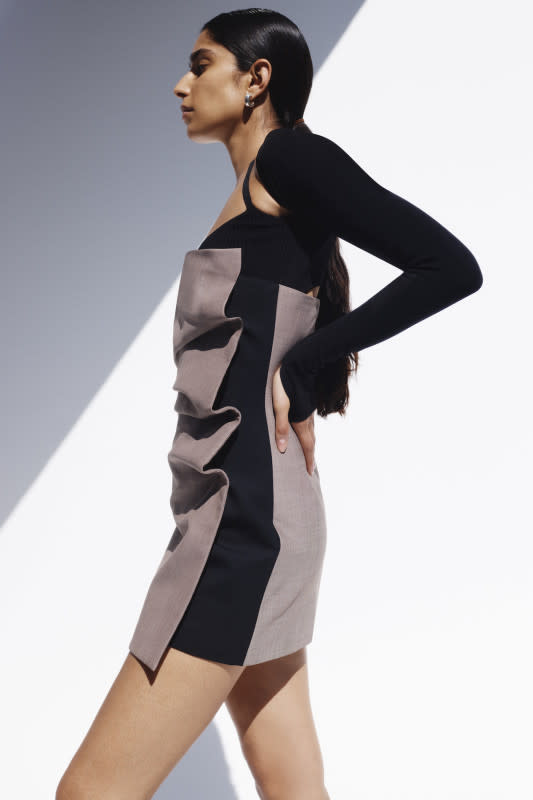
Photo: Courtesy of Sir
How would you describe your brand's aesthetic?
Campbell: We have a little bit of drama and fun prints, but the design itself is always understated. Then, we have a lot of oversized and soft tailoring, that play on masculine energy as well, which is fun.
Coote: The femme-versus-masc is definitely something you can really see in the brand and in the product. We have that cool-girl androgynous look, and then also you can be that femme girl.
When you're designing, do you have a target Sir customer in mind?
Campbell: With opening retail stores, especially in Australia, our target market has broadened. Our key girl is still that 25-to-35-year-old woman who's confident and wants to dress up. But then we also have brought in more of a mature, elevated customer that's wearing more of the soft tailoring, along with maintaining that younger 18-to-25-year-old girl that's experiencing Sir for the first time and picking up more of the prints and summer dresses.
Coote: In the beginning, we were designing for ourselves and our friends and our muses. A lot of the designs reflect what we see — what we see in fabric, what shapes we'd like to see, what we would want to wear and what's missing from our wardrobes. We're obviously designing for a broader market now, but I think we always bring it back to that wearability factor.
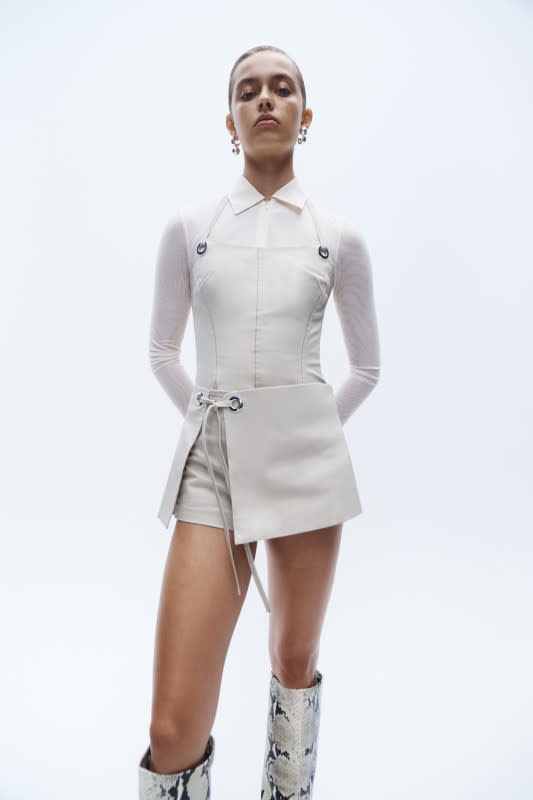
Photo: Courtesy of Sir
On the subject of designing for a broader market, you have a really extensive price range, from as low as $60 and up to $850. I'd love to know how your target audience factors into your pricing.
Coote: When we first launched the brand, we definitely entered at more of an entry-level price range, and the product was really simple. As we've broadened the brand and customer, we've really elevated some of the products. We're finding that we have no price resistance over occasion-wear... That said, we would never want to forget about our entry-level customers.
Campbell: The whole ethos behind the brand is this aspirational but achievable price point. We don't ever want to outprice ourselves in the market where it doesn't have a value against the product. We'll always stagger our collections and have that $200-to-$400 price range for the girl who has that budget, but then we also don't want to lose where we are now, 10 years later, and what we want in the brand.
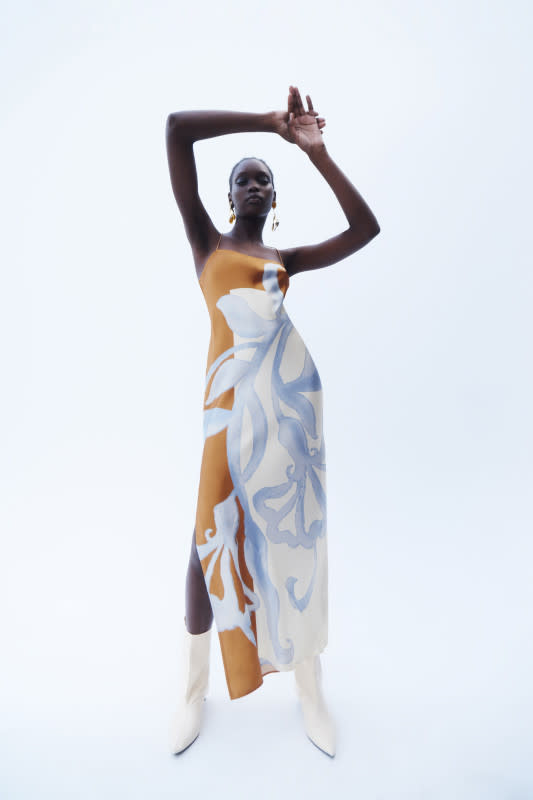
Photo: Courtesy of Sir
How has Sir's retail strategy evolved over the years?
Campbell: When we first started the brand, we never had a retail strategy. We were like, 'We're going to only be digital.' That was the whole ethos. Then, quite organically and really quickly, we got some domestic and then international wholesale traction, and it just propelled the brand a lot quicker than what we ever foresaw.
International wholesale has been a huge brand development for us. Barneys was one of our first major department stores. Our biggest partners at the moment are Mytheresa and Moda Operandi. We work closely with both of them and do a lot of exclusive offerings and smaller capsules, which have been really great for understanding the international customer and their customers, specifically. We've also, in the last couple of years, had a few pop-ups in New York and L.A. over the summer period, just to test the markets there. Wholesale will now always be a part of our business.
It's very much a collaborative experience. We've said no to a lot of things purely because we don't want to oversaturate the market too quickly. And we do want the right partners. We very much value how the product looks on the floor, the brand adjacencies, the collateral that they roll out and the ethos behind their brand... It's more building those relationships and starting from a smaller offering to growing that once we learn the customer that works for both partners.
We never had it planned originally, but when we got to open our Bondi flagship, it was such a huge moment. Because our brand was purely digital before that, it was so nice to be able to give the customers a full sensory experience of what we would want the shopping experience to be, including the lifestyle element of the brand — furniture, books, art and interiors. [Retail] has definitely expanded how our customers perceive us, and we would love to have a physical touchpoint in New York or L.A., which is hopefully not too long on the horizon way.
Coote: Because we've expanded our product offering as well and we have multiple categories, I think we have the breadth in the product to be able to support stores and to have them perform really well. We're definitely gearing up for retail expansion internationally, with hopefully New York first.
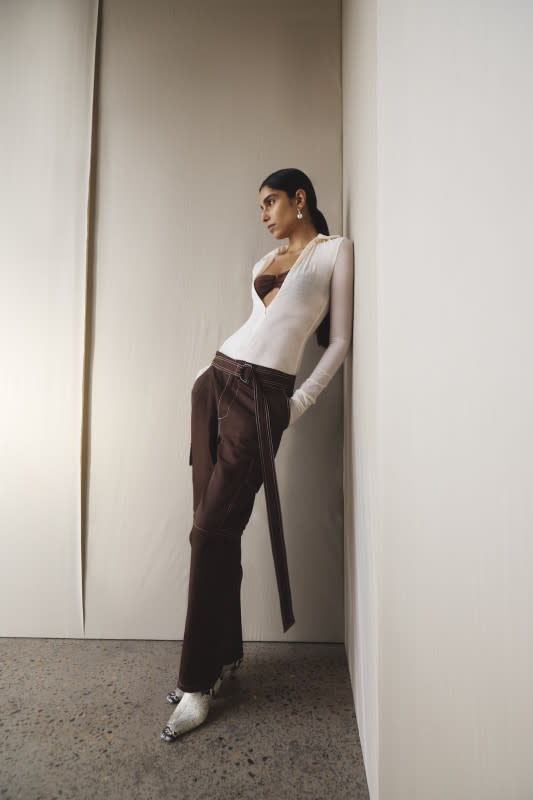
Photo: Courtesy of Sir
What have been the challenges in building an international business from Australia?
Coote: From a visibility point of view, with the way that the brand launched and with our social strategy, we became global really quickly and were shipping everywhere. For us to get traction and visibility was easy, but our biggest challenge now is navigating how to scale that growth. The shipping, duties and taxes are definitely a big challenge and also all the legalities, particularly in the US.
Campbell: Also, with the seasonality, we've jumped around a lot of times, where we've either repositioned the brand to have a northern hemisphere focus or later have a southern hemisphere focus. But especially post-Covid, the way that our customers are buying is trans-seasonal now. We offer both seasons or an element that's trans-seasonal, because our girls are traveling.
Can you walk me through your creative process for your collections?
Coote: Generally, it starts with a travel trip. We source locations that we aspire to travel to, then we filter through the flea markets, libraries, galleries and other places to garner inspiration. Then, we'll come back and concept all of our prints with our teams, present the themes of the collection and go about looking at fabrics and deciding what shapes we think will work into those.
Maybe that's also why Sir resonates internationally too, because we do get inspired by the people on the street overseas and the way people dress and the way they take so much care in how they dress. Particularly in Tokyo, walking down the streets and seeing head-to-toe such put-together and beautiful outfits really inspired us.
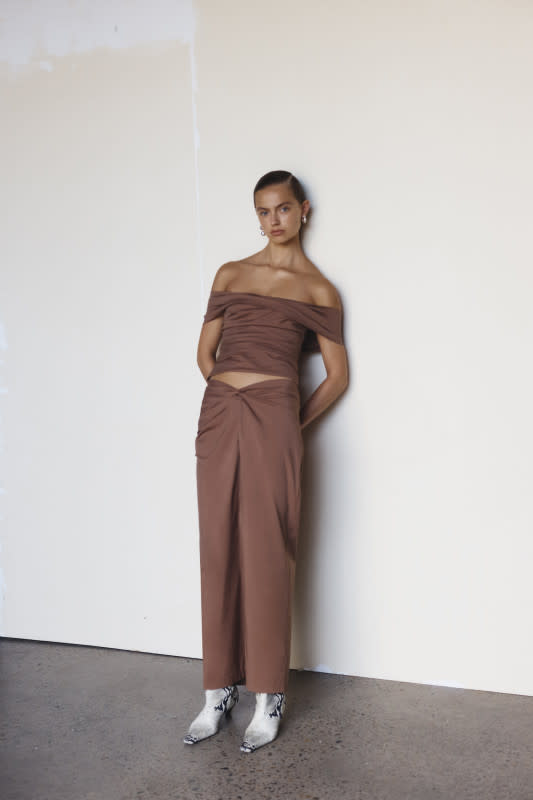
Photo: Courtesy of Sir
How do you navigate the rapid trend cycle today while also remaining true to your minimalist aesthetic?
Coote: We've never been too preoccupied with what other people are doing... We don't do any trend forecasting, for example, nor does our design team. There's a classic element to the product, and we try as much as possible to stay true to who we are.
Campbell: A lot of our friends still wear Sir pieces from five or six years ago, so it's not necessarily those trend-driven pieces that really carry over. There's always a focus on that [longevity] — I mean we're designing almost 12 months out at the moment, so we can't really get caught up in the fast-fashion trends, anyway.
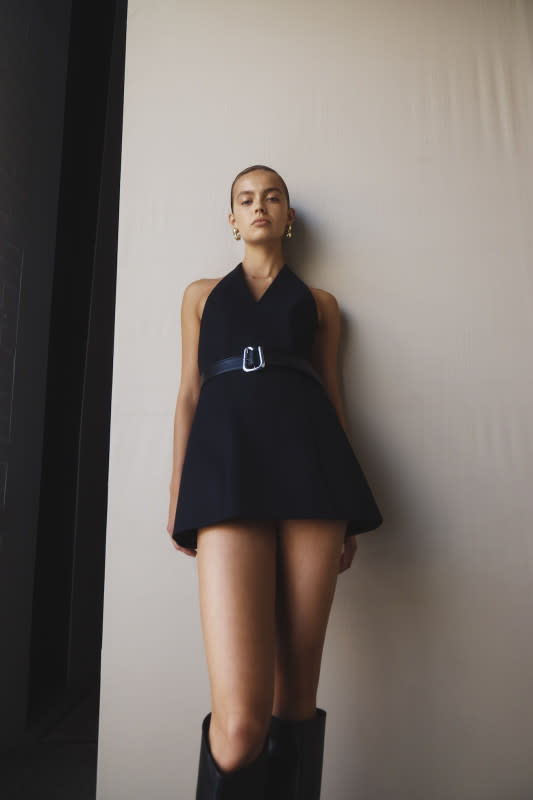
Photo: Courtesy of Sir
Aside from that timelessness, sustainability is also big value for your brand. How do those pillars translate within your collections?
Coote: Nikki and I have had such a value for fabrics and where they're sourced. We always use natural fabrications like linens and cotton. Now, as a team, we're looking to fabrics of the future and constantly filtering through the best possible options.
We've partnered with Good Earth Cotton, which is an Australian cotton farm, and taken trips to see how they run their processing, which is really interesting, and how there's such a focus now for suppliers and manufacturers to actually be doing the right thing. Even for all of our other manufacturers in China, Vietnam and Turkey, we make sure that they have the same values as us and that they're aligned in terms of their practices.
What have been your biggest career milestones?
Campbell: Seeing the community wear Sir on the street in different places is still a highlight most days. Then, having the pop-up store and having people come in and know the brand, having our retail stores open here in Australia were huge moments for us.
Coote: I think we were one of the first Australian brands that Barneys ever took on, so that was a huge, huge, huge, huge moment for us too. It was the start of that international expansion.
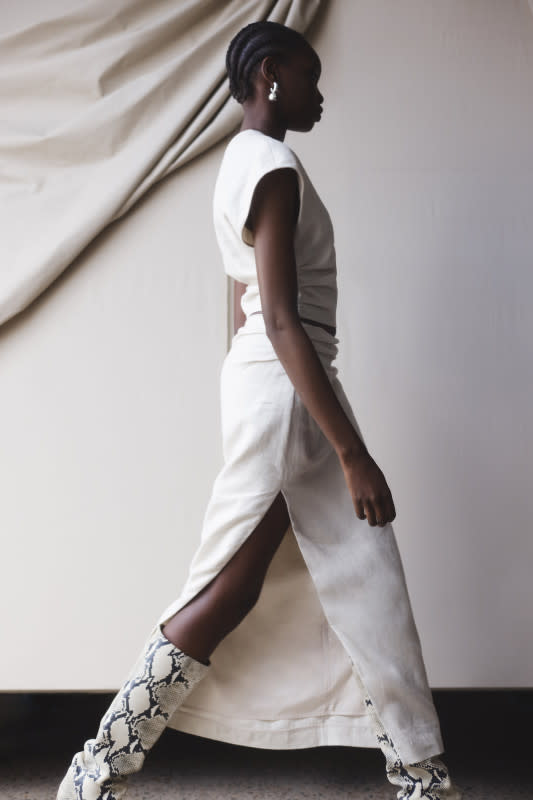
Photo: Courtesy of Sir
What advice do you have for aspiring designers who are looking to start their own brands?
Campbell: Don't give up and don't go too hard on yourself, because there are always going to be days where it feels like everything goes wrong, but if you believe in [what you do] and you're doing your best, it will get there. We had so many moments where we were like, 'Surely something else can't go wrong' and it would, but we got through it. You always end up better for it.
Sophie: I feel like when you start a brand, you're just rushing to get it out there. My biggest advice would be to take your time, get the branding and product perfect and really plan your strategy to market. These days, there's so much out there, so refine it, get it really perfect, be really happy with where it's at and have a strategic plan to launch.
This interview has been edited for clarity.
Please note: Occasionally, we use affiliate links on our site. This in no way affects our editorial decision-making.
Never miss the latest fashion industry news. Sign up for the Fashionista daily newsletter.

